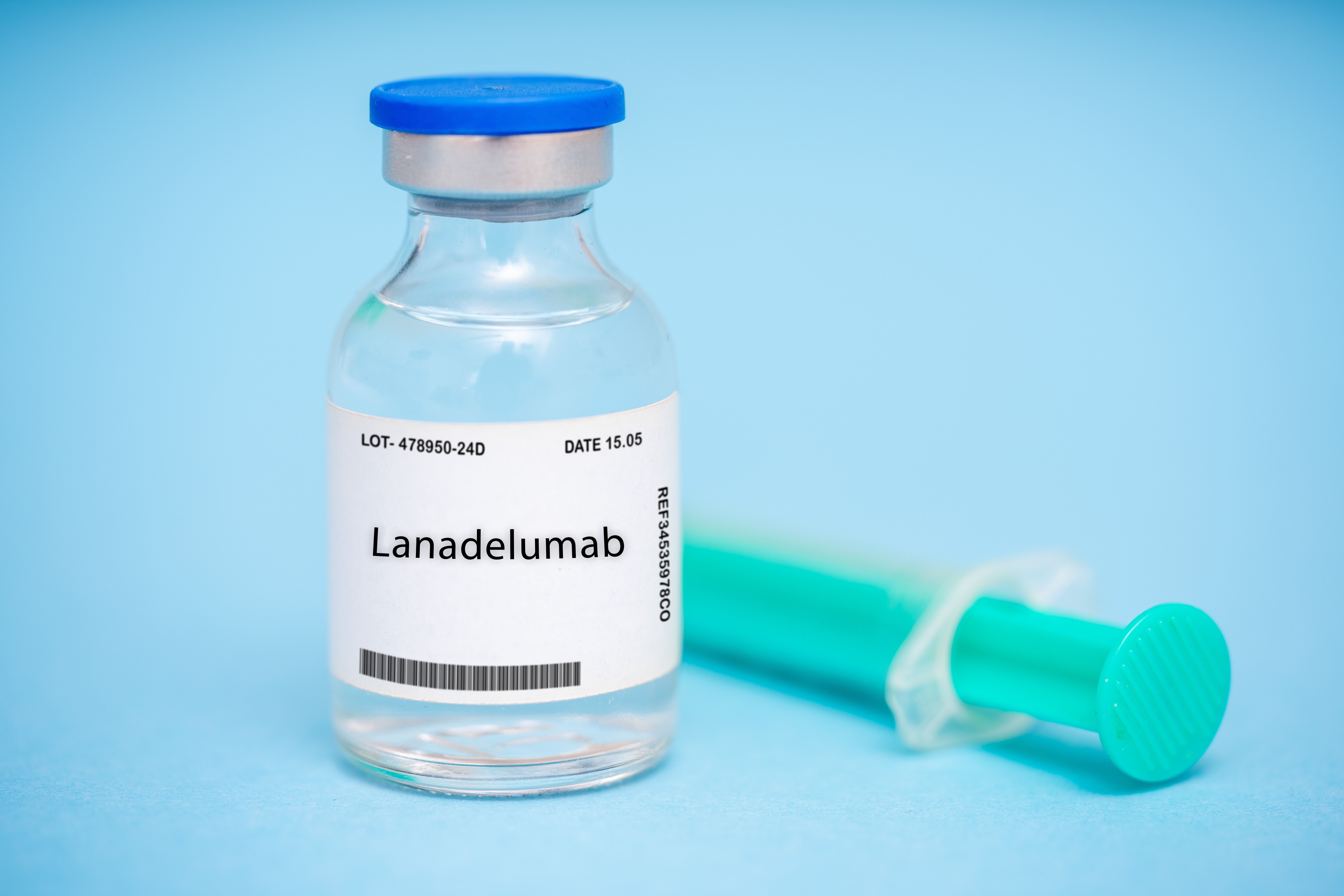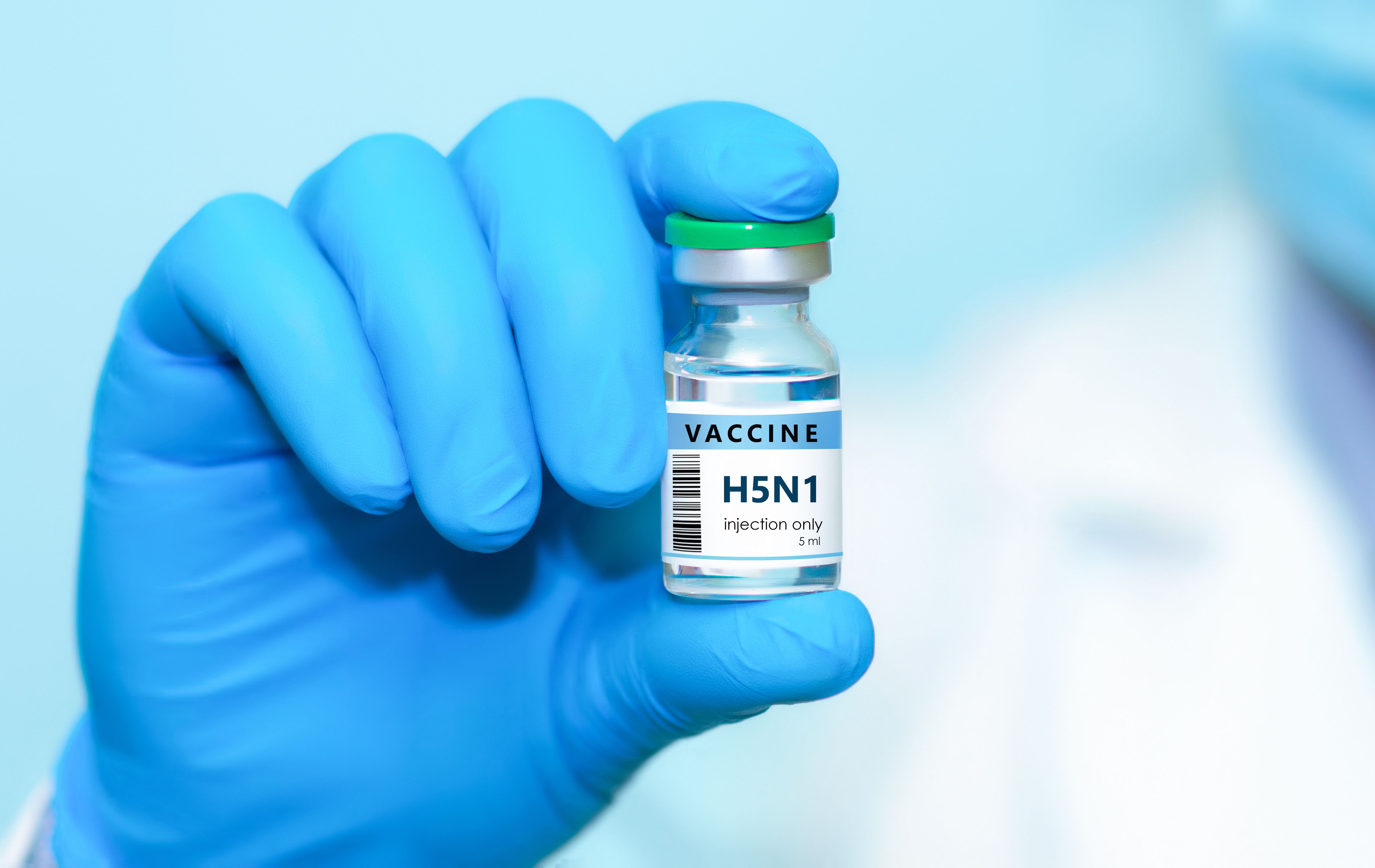About the Trials
1. ENABLE:
- Trial Name: A Study of Lanadelumab in Persons With Hereditary Angioedema (HAE) Type I or II (ENABLE)
- ClinicalTrials.gov ID: NCT04130191
- Sponsor: Shire
- Completion Date (Estimated): September 30, 2024
2. EMPOWER:
- Trial Name: A Study of Lanadelumab in Persons With Hereditary Angioedema (HAE) Type I or II in North America (EMPOWER)
- ClinicalTrials.gov ID: NCT03845400
- Sponsor: Shire
- Completion Date: October 22, 2022
Study results published in The Journal of Allergy and Clinical Immunology suggests that the sustained safety and efficacy of lanadelumab (Takhzyro; Takeda) in adolescents with hereditary angioedema (HAE) is similar to data from pivotal studies that evaluated mixed adult and adolescent populations.1
Previously, data on the long-term prophylaxis outcomes in adolescents with HAE was considered scarce, said Salome Juethner, senior medical director, head of Rare Genetics at Takeda, in an interview with Pharmacy Times.
“HAE is a rare genetic disorder that can cause painful, unpredictable attacks that can be debilitating and potentially life-threatening. Symptoms may change over time and HAE doesn’t look the same for everyone,” said Juethner in the interview. “Although recurrent swelling attacks and symptoms typically present in childhood, data on long-term prophylaxis treatment outcomes in adolescents with HAE are scarce."
Using data from the 2 phase 4 trials—the prospective, multicenter, non-interventional ENABLE (NCT04130191) study and the observational, non-interventional EMPOWER (NCT03845400) study—the investigators assessed the outcomes of lanadelumab treatment in adolescents with HAE. Outcomes were analyzed in both new—or naïve—and prevalent lanadelumab users.
Adolescents with type 1 or 2 HAE aged 12 to 18 years were enrolled. Both trials evaluated patients who were treated with lanadelumab and were followed for up to 24 or 36 months depending on the individual enrollment rate. The primary end points for ENABLE and EMPOWER are the incidence rate ratio (IRR) of HAE attacks up to 3 years after initiation of lanadelumab and the number of HAE attacks prior to and after the initiation of lanadelumab, respectively. Both end points were measured from enrollment until up to 36 months.
Secondary end points for the ENABLE trial include the rate of on-treatment participant-reported HAE attacks, the rate of HAE attack severity, the number of on-treatment HAE attacks (based on anatomical locations), quality of life, and others. For EMPOWER, secondary end points include the dose of lanadelumab injections as well as their frequency, the proportion of injections based on the type of administration, time form diagnosis to lanadelumab initiation, and others.
A total of 12 new and 7 prevalent adolescent lanadelumab users were included, of which 50.0% and 71.4%, respectively, were female. According to the findings, HAE attack rate in new users had decreased by approximately 86.8% following treatment with lanadelumab. Attacks per month dropped from 3.56 (95% CI 1.87–6.74) at baseline—which was prior to lanadelumab initiation for ENABLE, and pre-enrollment for EMPOWER—to 0.47 (95% CI 0.22–1.01) after initiation of lanadelumab (IRR: 0.13, 95% CI 0.08–0.21), and by 92.6% during lanadelumab steady state (IRR 0.07; 95% CI 0.04–0.13). In addition, prevalent users of lanadelumab had an attack rate of 0.0±0.1 attacks per month during the overall study period.1
“Within the adolescent studies, HAE attacks were defined by 4 categories: body part affected by the attack, attack severity, if the patient received HAE treatment for the attack and the type of HAE treatment received,” said Juethner in the interviews. "These categories are in line with how health care professionals identify HAE attacks."
Further, the trials found that most HAE attacks were mild or moderate in severity in both new (78.2%) and prevalent (36.4%) lanadelumab users, who were then treated with on-demand medications—most frequently C1 inhibitors—which did not require visits to health care professionals. In addition, Juethner noted in the interview that the body part that was most frequently affected by HAE attacks was the abdomen.1
"Most commonly, subcutaneous attacks are mistaken for allergic reactions," Juethner said. "Abdominal attacks are frequently mistaken for appendicitis or irritable bowel syndrome.”
According to the results, there were a total of 29 treatment-emergent adverse events (TEAEs). In new lanadelumab users, approximately 82.8% of TEAEs were mild or moderate in severity, and 93.1% were considered non-serious, affecting 7 of 12 patients with HAE. In addition, 6 TEAEs affected 5 of 7 prevalent users, of which all were mild to moderate in severity and considered non-serious. The study authors noted that there were no TEAEs that were directly related to lanadelumab.1
"HAE is under-recognized and frequently misdiagnosed as another condition," said Juethner in the Q&A. "Currently over 60% of our pipeline—including the PDT R&D pipeline—addresses a rare disease or rare subset of a broader disease class."
References
1. Tachdjian, R, Banerji, A, Busse, P, et al. Lanadelumab Effectiveness and Safety in Adolescent Patients With Hereditary Angioedema Aged 12 to <18 Years: Pooled Results From the Real-World ENABLE and EMPOWER Studies. JACI. 2024;153(2) doi:10.1016/j.jaci.2023.11.262
2. A Study of Lanadelumab in Persons With Hereditary Angioedema (HAE) Type I or II (ENABLE).ClinicalTrials.gov identifier: NCT04130191. Updated March 30, 2023. Accessed March 20, 2024. https://clinicaltrials.gov/study/NCT04130191
3. A Study of Lanadelumab in Persons With Hereditary Angioedema (HAE) Type I or II in North America (EMPOWER).ClinicalTrials.gov identifier: NCT03845400. Updated March 30, 2023. Accessed March 20, 2024. https://clinicaltrials.gov/study/NCT03845400







